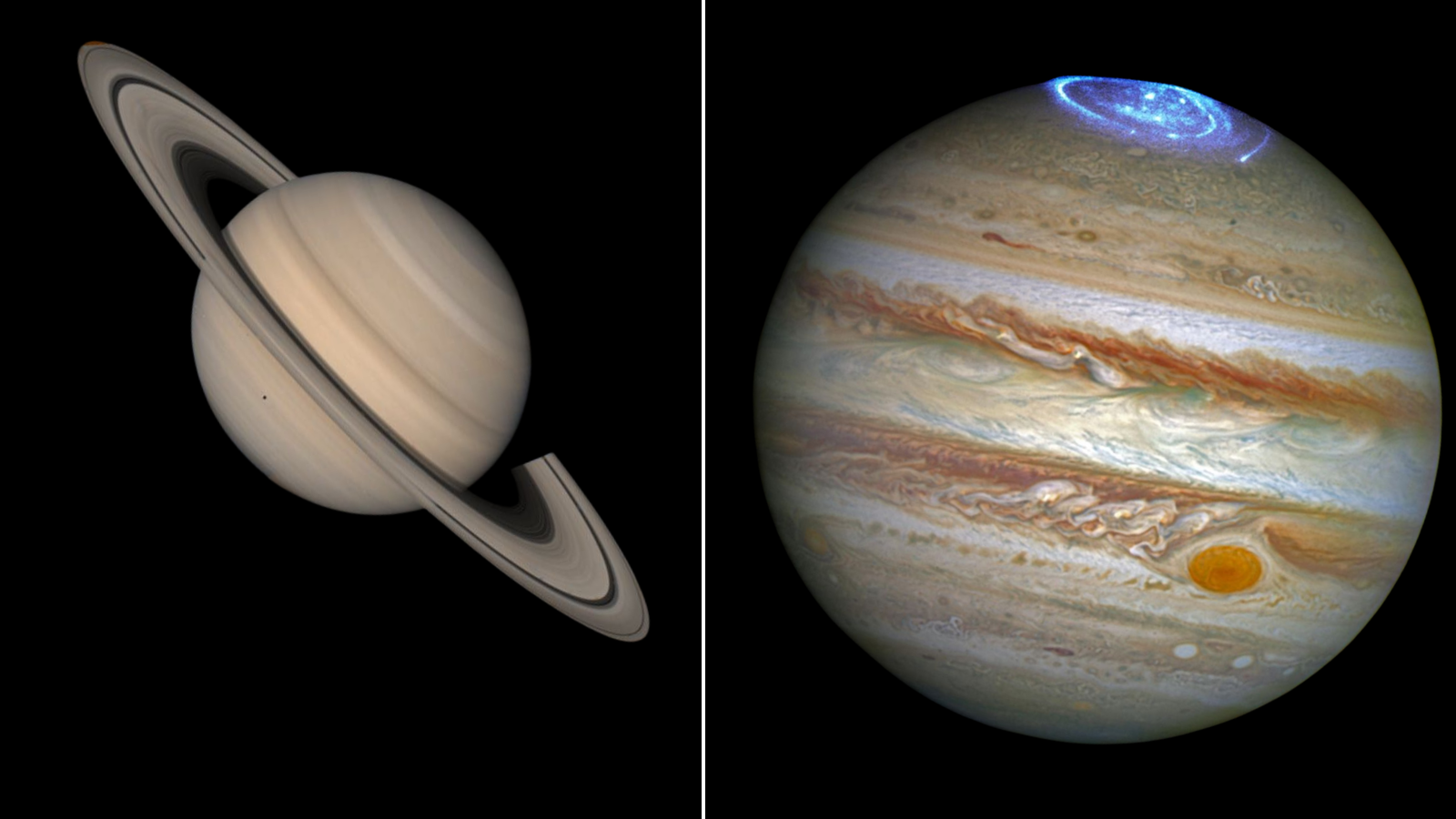Here's how 2 Indian schoolgirls discovered a 'Mars-Crosser' asteroid
It's not every day that two Indian schoolgirls spot a space rock that scientists haven't yet, but that's exactly what happened this summer in a stroke of cosmic good luck.
Radhika Lakhani and Vaidehi Vekariya, two students in Surat, a city in Gujarat in western India, were taking part in a citizen-science project using astronomical data when they realized they were seeing something new. That something turned out to be an asteroid now dubbed 2020 OE6.
It was an exciting moment for the space-minded schoolgirls. "This was a dream. I want to become an astronaut," Vekariya told CNN.
"I don't even have a TV at home, so that I can concentrate on my studies," Lakhani told Reuters.
Related: Photos: Asteroids in deep space
DISCOVERY ALERT!We are proud to announce VAIDEHI VEKARIYA SANJAYBHAI and RADHIKA LAKHANI PRAFULBHAI, two students of P.P. SAVANI CHAITANYA VIDYA SANKUL (CBSE) from Surat with the help of SPACE-AIASC discovered a new Asteroid which is a Near-Earth Object named HLV2514. pic.twitter.com/HXpOvrwxNYJuly 25, 2020
The 2020 OE6 designation is a standardized nomenclature that reflects the object's discovery date. But someday, Lakhani and Vekariya could propose a more accessible name to the International Astronomical Union, the body that oversees all names in the solar system, an opportunity they told Reuters they were excited about.
Lakhani and Vekariya made their find through a campaign with a citizen-science project called the International Astronomical Search Collaboration. The group connects people around the world with data from two key asteroid-hunting observatories, the Panoramic Survey Telescope and Rapid Response System (Pan-STARRS) in Hawaii and the Catalina Sky Survey in Arizona. Both projects specialize in scanning huge swaths of the sky frequently, enabling newly seen moving objects to stand out against the steady background of the stars.
Breaking space news, the latest updates on rocket launches, skywatching events and more!
That said, it's unusual for human eyes to actually discover asteroids these days, and Lakhani and Vekariya got lucky to do so, Paul Chodas, who leads the Center for Near-Earth Object Studies at NASA's Jet Propulsion Laboratory in California, told Space.com in an email. Typically, algorithms do the hard work of spotting an unexpected object moving across the frame.
But for this particular asteroid, those algorithms didn't have enough information to spot the space rock. Lakhani and Vekariya found it in images taken by Pan-STARRS on June 23. The observatory's view is an arrangement of squares, with narrow seams between them that block out certain parts of the sky in each image. And the newly discovered object spent too much time in those seams for the observatory's algorithms to detect it in those images.
Although the asteroid slipped through the net that night, however, scientists would have detected it sooner or later, Robert Weryk, an astronomer at the University of Hawaii, told Space.com in an email. And it turns out that the newly discovered asteroid has turned up before: Weryk was able to track it down in images from another asteroid-hunting observatory and in images taken in 2013 and 2017, as well as in July 2020, a month after the images the students had used.
In the context of some media reports about the discovery, which have labeled the asteroid "Earth-bound," that delay might be worrying. But 2020 OE6 is 50 million miles (70 million kilometers) away from Earth right now and will stay at more or less that distance for at least centuries if not millennia, Chodas said. (For comparison, the moon is about 240,000 miles or 390,000 km away, making this particular asteroid about 200 times more distant.)
All the observations combined have allowed scientists to identify the object's orbit quite precisely, Weryk said. The asteroid takes a bit more than three Earth years to orbit the sun and is perhaps between 1.2 and 3 miles (2 to 5 kilometers) wide. And 2020 OE6 is what scientists call a Mars-Crosser, which means it orbits at around the same distance from the sun as Mars does, although despite the name, the two bodies' paths don't actually cross, according to Chodas.
That's not a particularly unusual type of asteroid — in fact, scientists have discovered more Mars-Crossers than near-Earth asteroids, although both tallies pale in comparison to main-belt asteroids between Mars and Jupiter, which represent the vast majority of asteroids scientists have discovered to date.
The coronavirus pandemic has put a damper on Lakhani and Vekariya's celebrations, according to news reports. But International Astronomical Search Collaboration Director Patrick Miller, a mathematician at Hardin-Simmons University in Texas, told Space.com that the group is preparing commemorative plaques and organizing a ceremony for the pair in New Delhi.
Email Meghan Bartels at mbartels@space.com or follow her on Twitter @meghanbartels. Follow us on Twitter @Spacedotcom and on Facebook.

Meghan is a senior writer at Space.com and has more than five years' experience as a science journalist based in New York City. She joined Space.com in July 2018, with previous writing published in outlets including Newsweek and Audubon. Meghan earned an MA in science journalism from New York University and a BA in classics from Georgetown University, and in her free time she enjoys reading and visiting museums. Follow her on Twitter at @meghanbartels.
